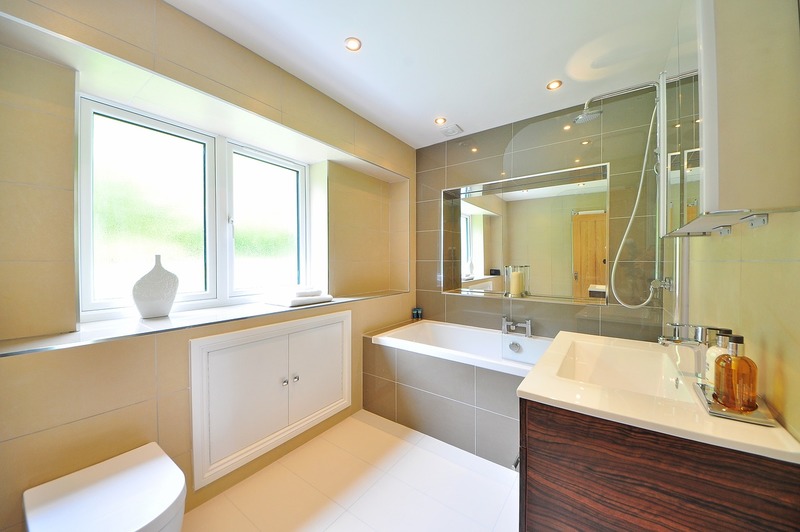Mildew is a six-letter word that we may spot in bathrooms all too often. Learn how to remove mildew from bathroom ceiling and prevent it from coming back.
Mold thrives in warm, humid areas like the bathroom, and it can grow on just about any surface. Once you’ve discovered it, cleaning mold in the bathroom can be a difficult task.

To refresh your bathroom, follow our mold cleaning suggestions, including items to use, directions for specific surfaces, and crucial prevention strategies. You’ll want to make absolutely sure you get everything, so you don’t have to deal with mold in the bathroom all the time.
Tip: If you suspect your washroom contains black mold (Stachybotrys chartarum), have it tested by a specialist since you may have a bigger problem on your hands. If the findings reveal other common household molds, follow our cleaning instructions.
Mildew-Removing Cleaning Products For Bathrooms
Use gloves and operate in a well-ventilated location when using any cleaning product for bathroom mold. Cleaning mold can release mold spores into the air, so wearing a mask is recommended.
Here’s a related article about how to get mildew smell out of towels that will help you along the way.
Several solutions on the market claim to kill mold, but plain old soap and water (along with some elbow grease) generally suffice. You can also prepare your own bathroom mold cleaning solution with everyday household products.
1. Borax
A natural technique to clear mold in the bathroom is to use borax, a white mineral powder. Mix one gallon of lukewarm water plus one cup of borax and fill a spray bottle halfway with the solution.
Spritz immediately on the surface to be cleaned. You can remove mildew and mold stains with a scrub brush, sponge, or a clean rag: mop tile or vinyl floors with the remaining borax mold cleaner.
2. Bleach
Bleach is another helpful alternative for eradicating mildew and mold stains in the bathroom, but only in a well-ventilated environment. Turn on the washroom exhaust fan or open a window when dealing with bleach.
Nonporous surfaces such as sinks, tubs, toilets, and showers can be cleaned using a 1:10 bleach to water solution, but you should not use it to clean mold from the ceiling or walls.
3. Distilled Vinegar
Cleaning mold in the bathroom with distilled white vinegar is a natural option. Use it straight on your showerhead, drain, or toilet, or dilute it to clean tile floors.
While undiluted white vinegar may not have a pleasing odor, it is an excellent mold and mildew cleaner.
Allow approximately 10 minutes for the vinegar to settle on the afflicted region before wiping it away with a sponge or rag. Scrub with a bristle brush to remove stubborn mold.
Cleaning Mildew And Mold From Bathroom Ceiling
Whenever you notice mold or mildew growing on your bathroom ceiling, there are two things you should do.
Step #1. Determine the source
Is there a water leak over the toilet? If this is the case, fix the leak before removing the mold off the bathroom ceiling.
If moisture in the bathroom is the source of the mold, consider installing an exhaust fan or running a dehumidifier to reduce heat and dampness.
Step #2. Cleaning the mold from the bathroom ceiling
Begin by pouring a vinegar solution into the affected region. Spray the vinegar straight on the ceiling and wipe with a clean rag if the ceiling is coated with paint or perhaps another finish that allows for scrubbing.
If not, the affected ceiling section will need to be scraped off and replaced. Mold removal from a textured ceiling is a job best left to the pros, as it necessitates the use of specific ventilation masks and safety clothes.
For more tips on getting rid of mildew, you can check out this article on “why does my washer smell like mildew”.
Mildew Removal From Bathroom Walls
Removing mold and mildew off walls with soap and water or vinegar in a spray bottle is similar to cleaning mold off bathroom ceilings. If your painted walls are scrubbable, you can directly apply vinegar to the mold and scrub it away.
Allow the area of the walls to dry completely before applying stain-blocking paint. Follow the cleaning recommendations in the next section if your bathroom walls are tiled.
It will be tough to remove the mold manually if it has entered the drywall or has spread across the entire wall. Instead, get an expert to remove the mold.
Disturbing so much mold could be hazardous to your health and spread to other parts of your house.
Conclusion
Preventing mold from forming in the bathroom is the most effective strategy to combat it. After a shower, run an exhaust fan for at least 30 minutes to remove extra moisture.
To save water in the bathroom, squeegee the shower walls after each use. Remove damp towels from the floor and keep them dry.
Disinfecting your bathroom once a week is also an excellent technique to keep mold at bay. That will be all on how to remove mildew from bathroom ceiling.
